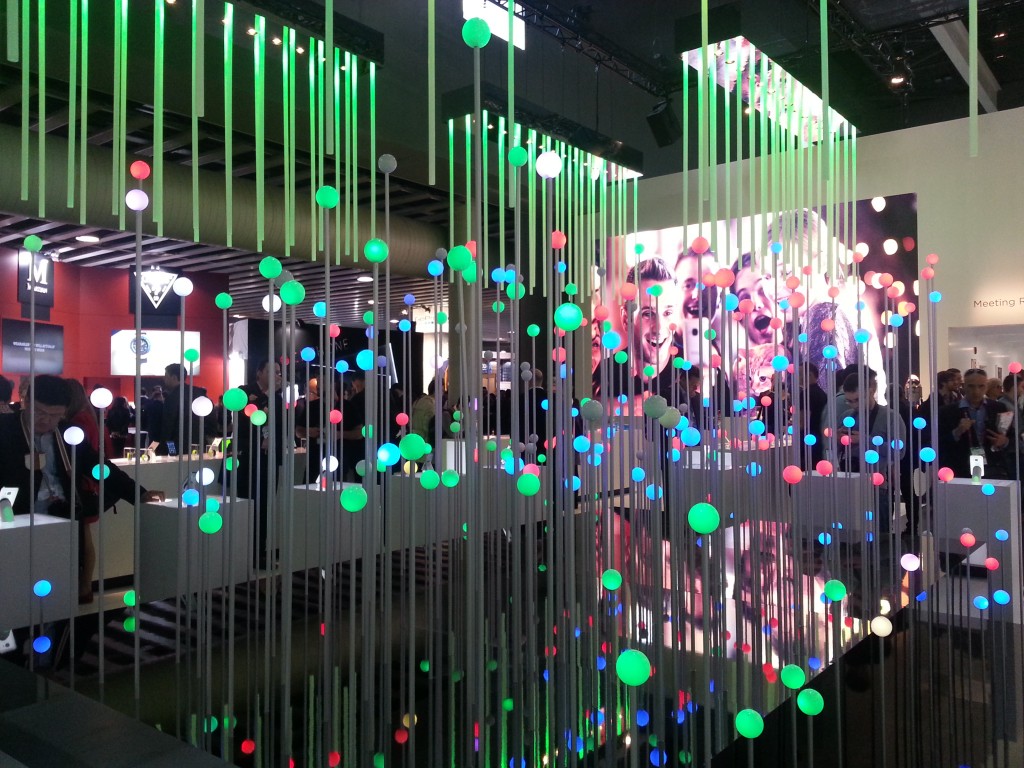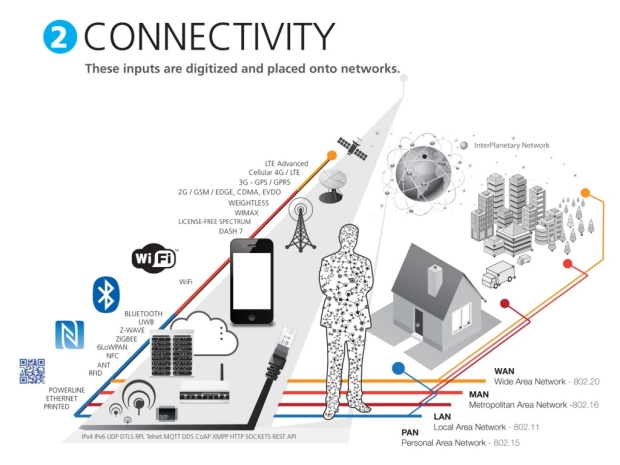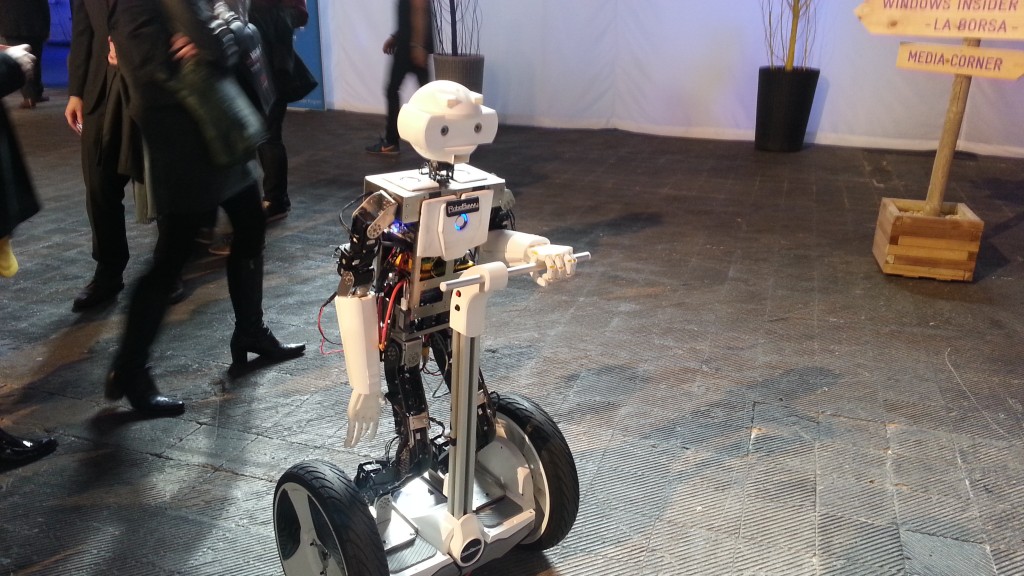Conxa Rodà
This third and final part of the series about the tech trends in museums deals with the technologies that go beyond 2015. To some it might seem a bit futurist. But it would be very convenient for us to be alert to the social digital trends and uses, and to keep experimenting and implementing whatever is possible, at a low cost and with maximum outcome. You don’t need to be a pioneer, either. In fact, it could be very wise to see how it evolves and to apply what we’ve learnt in the experimental phases developed by early adopters.
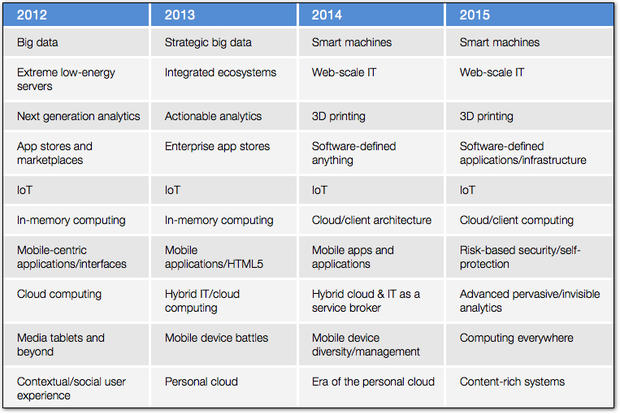
Trends identified by Gartner. Source: www.techrepublic.com/blog/10-things/gartners-top-10-technology-trends-for-2015-all-about-the-cloud. Notice that trends that we now talk about a lot, already appeared in 2012
12. Wearables
These are complements or gadgets we can wear – glasses, watches, bracelets, rings, clothing -, and that are, in fact, electronic devices, receivers and transmitters of data which allow for a high degree of personalisation of information. It is foreseen that in the near future they will form part of our everyday lives. The most famous precedent has been the Google Glass. As it hasn’t achieved the social use expected, Google has recently announced its removal from the market, but although this could be rated as a failure, it is also true that being the first ones, they had a very valuable testing which has allowed improvements in augmented reality. I recommend these two articles: Why the failure of Google Glass is good for Google and Why Google Glass wasn’t a failure.
Wearable technology is a trend that is still in its early stages and it is not foreseen for it to reach a generalised use for a few years. Currently there are quite of lot of developments that have been put into practice for monitoring, for example, our vital signs when we do physical exercise, or the calories we ingest, or clothing that charges a battery through solar energy. With the support of the Mobile World Capital, it has been possible to see in Barcelona a pilot project of smart bracelets for clients of a hotel.

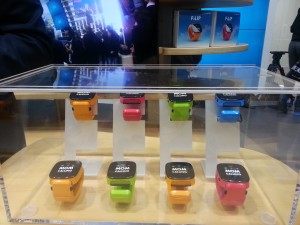
Smart wristbands, smart watches- at the Mobile World Congress 2015 in Barcelona. Photos: Conxa Rodà
The possible applications for museums go from providing context about a period or a piece, tracing in real time the visitors’ itinerary and behaviour, offering interaction, stimulating the sharing of photos and comments on social media, to personalising the content and offers according to the interests that we know through the data generated by the users.
As with other technological novelties, it will be interesting to follow the evolution and to experiment the real applicability of added value for our users. It is necessary to resolve questions of privacy, given the huge amount of personal data that it will allow to collect. Managing to offer contextually relevant content, in a non-intrusive way, and not be distractors with regard to the visitor experience, will be the challenge for museums.
Some wearables are aesthetically arguable. They will surely evolve towards smaller and more integrated elements. Remember how strange it seemed to us when we saw someone speaking in the street or in a bus at the beginning of mobile use. Better designs, at lower prices and, above all, ease of use and functionalities will be key for ensuring massive adoption in the future.
Wearables will be a basic component of the Internet of Things.
13. Internet of Things
Wearables are a first point of where we are heading: for the technology sector enters strongly in 2015, the concept of applied connectivity of objects, smart objects or Internet of things.
That means going well beyond the fact of objects provided with sensors that are connected to Internet. The added value will come with the integration of data from diverse sources so as to offer new, contextual and relevant knowledge to users. Applied to traffic or the efficient energy management of buildings there already exist initiatives, as well as objects that alert about dangers, or more trivial things, such as informing you that the milk has run out in the fridge. Cristina Sáez comments on other applications in her excellent article Back to the future: the internet of everything.
Having wider broadband and cyber-security will be technological questions to overcome to be able to generalise the internet of things. The potential: the increase of the knowledge and the personalisation of the services and products. As the experts say and Cristina Sáez includes, “in the near future we will be a smart society formed by connected human beings”.
For museums it will be possible to personalise the information according to the profile and preferences of the visitor.
We now often talk about the smart cities, of which Barcelona is a notable case.

Some of the projects of Barcelona Smart City http://smartcity.bcn.cat/en/projects
From here we will go to the smart museums. Surely not yet in 2015, but probably in just a few years. Meanwhile we can explore sectors that already apply it, and to think of uses in which we can do so.
14. Big Data
From the structured aggregation of large quantities of data from diverse sources, new knowledge can be generated. We, users, are highly productive at providing vast amounts of data through our use of multiple platforms and devices. We provide some data directly in a conscious way, other data are collected by the systems without us realizing it: when we browse from the computer, when we operate from the mobile, when we pay by credit card, when we send messages through the social networks, when we use wearables or smart objects. With the risks this involves in terms of breaching privacy, even though, supposedly, data are analyzed anonymously.
Analysing the Big Data in the blog of the CCCBLab they say: “The use of the Big Data, applied to the cultural production, allows us to represent in a continual way and in terms of space, how our visual culture is made up, and how the knowledge is produced, by placing the digital humanities ahead of the new challenges of a culture of data generated in the net.”
What is true is that the exploitation of aggregated datasets allows us to identify patterns of behaviour and, what is more interesting, predict and adapt them to a targeted cultural offer.
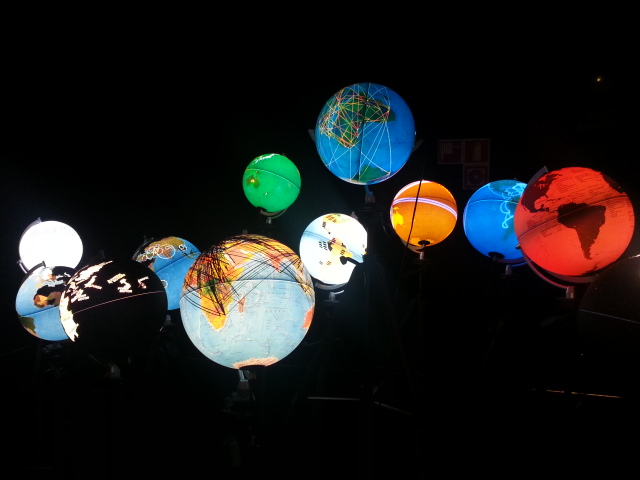
The visualisation of the data, as well as providing lots of information, can offer a very artistic result. Big Bang Data Exhibition in the CCCB. Photo: Conxa Rodà
In the United Kingdom there are four projects of Big Data funded by the Digital R&D Fund for the Arts. Worth highlighting is the Arts Data Impact that will embed the first ever data scientists-in-residence for the arts at the Barbican, English National Opera (ENO) and National Theatre to interrogate their ever-growing data resources alongside national data and generate tools, audience insight and organisational learning.
In our country, Roca Salvatella and Telefónica published in 2014 the first report about Big Data and tourism (in Spanish) focused on Madrid and Barcelona. The analysis of major packs of anonymous data offers detailed information about the users and their preferences during their stay and includes strategic recommendations based on this data.
The inter-operability of the data and offer free access to them (Open Data) are two of the crucial aspects of the current computing environment.
15. Human Resources: from administrative managers to boosters of innovation
I place this trend as the last to close the cycle given that, without a digital transformation of the organisations, many of the changes and trends announced would be more difficult, if not impossible.
We need intelligent organisations, open to innovation, with more flexible structures, in which everything is interconnected, in which the ideas flow and new ones are generated, where people experiment, and take risks, where thinking and taking the initiative is recognised, where ongoing learning is fostered. Where the working processes are oriented towards the excellence of the service for the user and not the excellence of the procedure.
The evolution of the human resource departments and others will be key, towards a better matching of the current needs of the complex, changing and digital setting. The digital transformation of the organisations also requires rethinking the orientation of the departments of resources – human, economic, technological, which should evolve towards a more strategic role.
Thus I like to define the museum as a connector, the departments of resources I also see as connectors of people, as promoters of collective intelligence, that know how to give value to internal social capital. In a world in which connection takes on more relevance on a daily basis, it will be essential for the organisations to foster structures which are “bio-functional in which each unit works in an inter-connected way with other units.” (Jesús Martínez Marín 2014).
It is necessary to match the training offer to the new digital setting and to the new ways of working. We need more and better training in digital skills, in collaborative work and networking, in online communication, in mobility, in strategic vision. Al II Informe sobre el estado de la cultura en España 2014: la salida digital, (The 2nd Report about the state of culture in Spain 2014: the digital way out) one of the three recommendations for the museums sector proposes “Fostering the technical training of the managers and the inclusion of professional qualified in new technologies in the museum organisations”.
… and to continue exploring and improving
All in all, it’s a question of knowing and assessing how digital can help us to better achieve our mission as a museum, to be good connectors between the collections-knowledge and the public. As expressed in the report About the digital transformation -10 keys for the debate, “Digital maturity is determined in two dimensions: digital intensity – technology, and the intensity of the transformation of the management – organisational culture”.
A double continual exploration helps us to orient our digital action: to be attentive to the digital transformations, both those of our sector and from others, and, above all, to be very attentive to observing what the users are searching for and what they do. Not all innovation is digital, but digital certainly is an innovation-driver.
And we haven’t talked about natural interfaces, such as gesture and the voice, or robotics or drones. We’ll surely have them in the museums before we imagine. But we need to be alert because… winter is coming.
15 Tech trends in museums in 2015 /1
15 technological trends in the museums in 2015 /2
Related links
Wearables
Wearables in Culture. Made-To-Measure Augmented Experiences, blog from the CCCBLab
V&A DesignLab Project, Wearable Technology with Seymourpowel, Victoria & Albert Museum Blog
Internet of Things (IoT)
The Internet of Things explained
What is the “Internet of Things” and what does it mean for museums, Linda Kelly, 2012
What the Internet of Things Might Mean for Theme Parks, Museums, and Other Fun Places, Elizabeth Alton, 2015
Big Data
Big Data and Digital Humanities: From Social Computing to the Challenges of Connected Culture
5 reasons 2015 will be the year of Big Data, Matt Davies, 2015
How Unified Field is Using Big Data to Create Legible Cities, Elizabeth Alton, 2014
Technological tendencies 2015 (general)
Predicting the next decade of tech, Steve Ranger
25 Disruptive Technology Trends 2015-2016, Brian Solis, PPT
Nesta Predictions for 2015 (àudio, 4min)
My top 10 predictions for 2015, Sven Denecken
Executive’s guide to strategic tech planning: 2015 and beyond (free ebook)
Technology, Media & Telecommunication Predictions 2015, Deloitte
Co-directora del Curs d'Estratègia Digital_UOC_Museu Nacional d'Art de Catalunya
Co-directora del congrés CIMED de Museos y Estrategias Digitales

